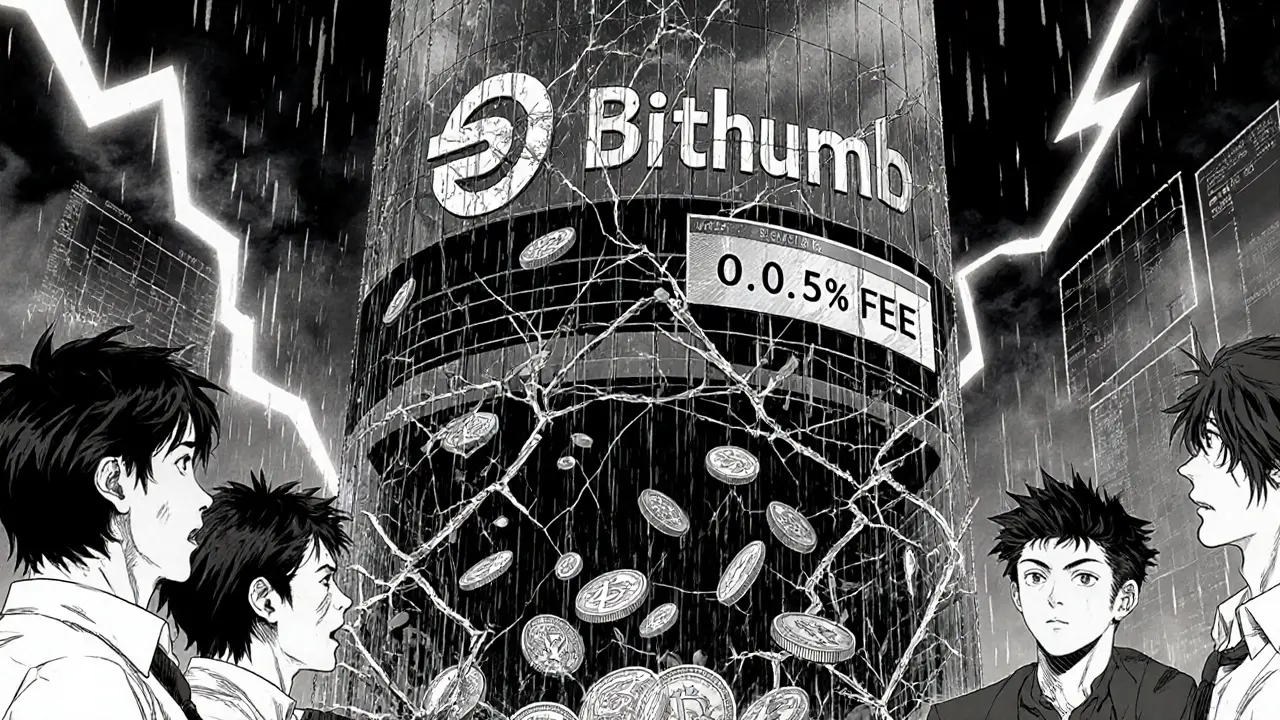BitStorage Exchange Comparison Tool
Founded
2018
Spot Assets
~500 (claimed)
Security Audits
None publicly disclosed
Exchange Comparison
| Feature | BitStorage | Binance | Coinbase |
|---|---|---|---|
| Founded | 2018 | 2017 | 2012 |
| Regulatory Jurisdiction | Seychelles | Cayman Islands / Malta | USA (FinCEN) |
| Spot Assets Listed | ~500 (claimed) | ~900 | ~250 |
| Order Types | Market, Limit, Stop-Limit | Market, Limit, Stop-Limit, OCO, Trailing | Market, Limit |
| Staking Options | Limited, self-reported APY | Extensive, transparent APY | Limited, only select assets |
| Security Audits | None publicly disclosed | Multiple third-party audits | Regular audits & insurance fund |
| Customer Support Channels | Email, sales-manager | Live chat, email, ticket system | Live chat, phone, email |
| Demo / Paper Trading | Available | Available (Binance Futures Demo) | Not offered |
Key Strengths of BitStorage
- Over 500 spot assets
- Demo trading for practice
- Quick-exchange feature
- Staking on PoS coins
Potential Risks
- No public security audits
- Limited regulatory transparency
- Slower customer support
- No insurance coverage
Recommendation
BitStorage is best suited for experienced traders who value a wide coin selection and are comfortable doing extra due-diligence. For beginners or those prioritizing regulatory oversight and 24/7 support, consider platforms like Binance or Coinbase.
When it comes to picking a place to trade crypto, many traders end up scrolling through endless options and wondering which platform actually delivers on its promises. BitStorage is a centralized cryptocurrency exchange launched in 2018 and registered in Seychelles. It markets itself as a "secure & efficient crypto trading platform" with a broad array of coins, staking tools and a quick‑exchange feature.
Quick Takeaways
- Founded in 2018, registered in Seychelles - limited regulatory transparency.
- Claims over 500 spot assets, but independent volume data is scarce.
- Offers market, limit and stop‑limit orders plus demo‑trading and staking.
- No public security audit; security claims are self‑reported.
- Best suited for users who want a wide coin list and are comfortable doing extra due‑diligence.
Core Features Overview
BitStorage structures its product suite around three pillars: trading flexibility, community perks and security.
1. Trading Options
The exchange supports what it calls "over 500" spot cryptocurrencies, though the Quick Exchange page lists around 370. The discrepancy likely stems from counting token variants or recently added assets. Order types include:
- Market orders - execute instantly at the best available price.
- Limit orders - set a specific price; the trade fills only if the market reaches that level.
- Stop‑limit orders - combine a stop price trigger with a limit price, giving finer control during volatile moves.
For newcomers, the platform also provides a demo‑trading mode that mirrors live markets without risking real funds. This sandbox can be a low‑risk way to test strategies before moving to a funded account.
2. Staking and Yield Services
Beyond spot trading, BitStorage offers staking on a selection of PoS (Proof‑of‑Stake) coins. Users can lock assets and earn periodic rewards, though exact APY (annual percentage yield) figures vary per coin and are not always transparent. The platform does not provide detailed validator information, so traders should compare these rates with dedicated staking services.
3. Community Perks
BitStorage promotes "exclusive promotions" and periodic airdrops for active users. While these incentives can boost short‑term holdings, the value and frequency are unpredictable. The exchange’s blog occasionally announces partnership bonuses, but historical data on redemption rates is limited.
Security Claims and Real‑World Evidence
Security is the biggest decision factor for any exchange. BitStorage states it employs "top‑tier security measures" such as two‑factor authentication (2FA), SSL encryption and cold‑storage for the majority of user funds. However, there are no publicly available audit reports from third‑party firms like CertiK or Quantstamp. The exchange’s registration in Seychelles also means it falls outside the stricter licensing regimes of the EU, the US or Japan.
Compared to well‑audited platforms such as Binance or Coinbase, BitStorage lacks the transparent incident‑response histories that give traders confidence during market crashes. No major hacks or service outages have been publicly reported, but the silence could simply be a lack of media coverage.
Usability and Customer Support
The user interface is clean, with a navigation bar that separates "Exchange", "Staking", "Demo" and "Airdrops". The quick‑exchange widget lets users swap assets in seconds, mimicking the experience of a decentralized aggregator but within a centralized order‑book.
Support is handled through a dedicated sales‑manager team reachable via email. The website does not list a live chat option or a phone hotline. Response times reported by forum users range from a few hours to a full business day, which is slower than the 24/7 live chat many larger exchanges provide.
How BitStorage Stacks Up - Comparison Table
| Feature | BitStorage | Binance | Coinbase |
|---|---|---|---|
| Founded | 2018 | 2017 | 2012 |
| Regulatory jurisdiction | Seychelles | Cayman Islands / Malta | USA (FinCEN) |
| Spot assets listed | ~500 (claimed) | ~900 | ~250 |
| Order types | Market, Limit, Stop‑Limit | Market, Limit, Stop‑Limit, OCO, Trailing | Market, Limit |
| Staking options | Limited, self‑reported APY | Extensive, transparent APY | Limited, only select assets |
| Security audits | None publicly disclosed | Multiple third‑party audits | Regular audits & insurance fund |
| Customer support channels | Email, sales‑manager | Live chat, email, ticket system | Live chat, phone, email |
| Demo / paper trading | Available | Available (Binance Futures Demo) | Not offered |
Risk Assessment Checklist
- Verify the exchange’s SSL certificate and URL (always use https://bitstorage.finance).
- Enable two‑factor authentication on every account.
- Consider storing large balances in a personal hardware wallet; use BitStorage only for active trading.
- Test the platform with a small amount or the demo mode before scaling up.
- Monitor community forums (Reddit, Bitcointalk) for any emerging security concerns.

Who Should Consider BitStorage?
If you’re an experienced trader who values a massive coin selection and enjoys trying out new tokens early, BitStorage can be a useful addition to your toolkit-provided you keep most of your capital in a self‑custody wallet. For beginners or users who prioritize regulatory oversight, insurance coverage, and 24/7 live support, platforms like Binance or Coinbase may feel safer.
Final Verdict
BitStorage delivers on its promise of a wide‑ranging market and a quick‑swap experience. The platform’s biggest drawbacks are the lack of independent security audits and limited transparency around its regulatory standing. In the crowded crypto‑exchange space, those gaps make it a higher‑risk choice compared with industry giants.
Overall, treat BitStorage as a supplementary exchange - great for testing new assets, but not the primary vault for holding the bulk of your portfolio.
Frequently Asked Questions
Is BitStorage a regulated exchange?
BitStorage is registered in Seychelles, which does not impose the same licensing requirements as the EU, US or Japan. Therefore, it is not considered a regulated exchange in those jurisdictions.
Can I withdraw my funds instantly?
Withdrawals are processed within 24‑48 hours under normal conditions, but delays can occur during high network congestion or if additional KYC verification is required.
Does BitStorage offer a mobile app?
Yes, the exchange provides Android and iOS apps that mirror the web interface, including the quick‑exchange and staking sections.
What security measures protect my account?
BitStorage uses SSL encryption, two‑factor authentication, IP‑whitelisting (optional), and claims that most funds are stored in cold wallets. No third‑party audit reports are publicly available.
How does the demo‑trading feature work?
The demo mode replicates live market prices using a virtual balance. It lets you place market, limit and stop‑limit orders without risking real cryptocurrency.
Are there any hidden fees?
Trading fees are listed as 0.1% maker and 0.2% taker, but withdrawal fees depend on the blockchain used and can be higher during network spikes.
What KYC information is required?
Standard KYC asks for full name, government‑issued ID, proof of address and a selfie. Higher withdrawal limits trigger additional verification steps.
Can I earn interest on my holdings?
Through the built‑in staking module you can lock supported PoS tokens and receive periodic rewards. APY rates vary and are not always disclosed upfront.










Twinkle Shop
January 24, 2025 AT 06:26The BitStorage platform integrates a multi‑tiered architecture that leverages both hot and cold wallet segregation, thereby reducing the attack surface for potential adversaries. Its API endpoints adhere to RESTful conventions and support WebSocket streams for low‑latency market data dissemination. Transaction signing is executed via ECDSA signatures using the secp256k1 curve, consistent with industry standards. The exchange employs TLS 1.3 with forward secrecy to encrypt client‑server communication, mitigating man‑in‑the‑middle interception risks. Although the whitepaper references periodic internal audits, no third‑party audit reports have been publicly disclosed, which raises a transparency gap. The jurisdictional choice of Seychelles circumvents stringent AML/KYC mandates, yet the platform still enforces a tiered verification process based on withdrawal thresholds. Fee structures are tiered by volume, with maker fees starting at 0.1% and taker fees at 0.2%, aligning with mid‑range market conventions. Order routing logic utilizes a price‑time priority algorithm, ensuring deterministic execution for limit orders. The demo‑trading sandbox mirrors live order book depth, enabling risk‑free strategy backtesting. Staking modules calculate rewards using on‑chain PoS validation metrics but often omit validator performance details, which can affect yield predictability. Liquidity provision is facilitated through an internal market maker bot that aggregates order flow across listed assets. User onboarding integrates two‑factor authentication via TOTP applications, and optional IP‑whitelisting enhances account hardening. While the platform’s UI is responsive and supports dark mode, accessibility features such as ARIA labels are sparsely implemented. The quick‑exchange widget abstracts order book complexity, executing swaps at prevailing best‑bid/ask spreads. Community incentives, such as periodic airdrops, are announced via the platform’s blog, though redemption ratios remain undisclosed. In summary, BitStorage offers a feature‑rich environment suitable for seasoned traders who can accommodate the inherent opacity surrounding its security audits and regulatory oversight.
Matt Nguyen
January 25, 2025 AT 10:13From a macro‑level view, the fact that BitStorage is domiciled in a tax haven suggests a deliberate obfuscation strategy, which might hide ulterior motives tied to data harvesting and covert market manipulation, especially given the lack of publicly verifiable security audits.
Cynthia Rice
January 26, 2025 AT 14:00Meta‑analysis of exchange fee structures shows BitStorage's rates are fairly standard.
Natalie Rawley
January 27, 2025 AT 17:46Listen up, folks-if you think you can just waltz onto any exchange and expect seamless trades, you’re missing the nuance. BitStorage’s order flow, while decent, is dwarfed by Binance’s deep liquidity pools, meaning slippage can bite you fast. Their staking suite, though present, lacks the transparency that power users demand, and the APY figures are more hype than hard data. On the upside, the quick‑exchange widget can be handy for fleeting arbitrage attempts, but don’t rely on it for precision execution.
John Corey Turner
January 28, 2025 AT 21:33Hey crew, just wanted to share a quick tip: when you dip your toes into BitStorage, start with a modest allocation and test the demo sandbox to calibrate your strategy. The platform’s UI is clean, making it easy to toggle between spot and staking tabs, and the WebSocket feed provides near‑real‑time price updates. Don’t forget to enable two‑factor authentication-it's a simple step that adds a solid layer of security. Also, keep an eye on withdrawal fees; they can spike during network congestion, so timing matters. Overall, it’s a solid secondary venue if you’re after that extra coin variety.
Kimberly Kempken
January 30, 2025 AT 01:20Enough with the sugar‑coated hype-BitStorage’s opaque security posture is a red flag. No third‑party audit? That’s practically an invitation for exploits. Their customer support drags its feet, and the lack of insurance means you’re on your own if anything goes sideways. If you value real protection, steer clear and stick with regulated players.
Carthach Ó Maonaigh
January 31, 2025 AT 05:06Yo, the demo mode on BitStorage is a decent playground, but the real‑time order book can feel laggy when the market’s hot. Also, the email‑only support means you’re waiting on replies while other exchanges have live chat ready 24/7.
Brooklyn O'Neill
February 1, 2025 AT 08:53Thanks for the heads‑up! I’ve found that pairing the demo with a small live trade helps gauge latency, and reaching out via email with specific ticket IDs tends to get faster responses.
Kortney Williams
February 2, 2025 AT 12:40From a risk‑management standpoint, it’s wise to keep the bulk of your holdings in a hardware wallet and only move the portion you plan to trade onto BitStorage. Their quick‑exchange can be handy, but remember that transaction confirmations still depend on blockchain congestion.
Laurie Kathiari
February 3, 2025 AT 16:26It’s troubling that BitStorage boasts “secure & efficient” while offering zero transparency on audits. Users should demand proof of security, not just marketing fluff.
Tyrone Tubero
February 4, 2025 AT 20:13Just to keep it simple-BitStorage’s fees are decent, but if you need 24/7 live chat, you’ll have to look elsewhere.
Scott McReynolds
February 6, 2025 AT 00:00Let’s take a moment to appreciate the broader landscape of crypto exchanges and where BitStorage fits into it. While many traders gravitate toward the biggest platforms for their deep liquidity and robust security frameworks, there remains a niche audience that seeks out less‑known venues for their unique asset listings and experimental features. BitStorage, founded in 2018, positions itself as a bridge between these two worlds, offering a fairly extensive catalog of spot assets-over five hundred in claim-while also providing a sandbox environment for newcomers to practice without risking capital. The quick‑exchange widget, for instance, enables rapid swaps that mimic decentralized aggregator behavior, a functionality that can be particularly appealing to arbitrage enthusiasts looking to capitalize on fleeting price discrepancies across markets. Moreover, the platform’s staking module, though limited compared to the expansive offerings of Binance, still allows users to earn yields on select PoS tokens, adding an extra revenue stream for those willing to lock up their holdings. From a security perspective, BitStorage implements standard industry measures such as SSL encryption, two‑factor authentication, and cold‑storage for the majority of funds, which aligns with baseline expectations for a centralized exchange. However, the lack of publicly available third‑party audit reports does leave a gap in the overall trust equation, especially when juxtaposed against the rigorous audit schedules of larger competitors. In practice, this means that while the exchange may be suitable for seasoned operators comfortable with conducting their own due diligence, it might not inspire the same level of confidence among risk‑averse newcomers. User experience also factors into the overall assessment; the UI is clean, navigation is intuitive, and the demo mode offers a frictionless entry point for strategy testing. Yet, the support channels-limited to email and a designated sales‑manager-can feel sluggish, especially during periods of heightened market volatility when prompt assistance becomes paramount. In summary, BitStorage serves as a complementary platform for traders who value a wide selection of assets and the ability to experiment in a risk‑free environment, but it should ideally be paired with more regulated exchanges for long‑term asset custody and comprehensive support.
Jenise Williams-Green
February 7, 2025 AT 03:46The moral calculus of entrusting your funds to an exchange that refrains from public audits is deeply unsettling; it borders on negligent, and those who overlook this risk are complicit in undermining industry standards.
Adarsh Menon
February 8, 2025 AT 07:33Wow looks like a fancy site but honestly who trusts a platform with no audit lol
Alex Gatti
February 9, 2025 AT 11:20Hey everyone, just a quick note-if you’re diving into BitStorage, make sure to enable two‑factor authentication and start with the demo mode to get a feel for the UI before moving real capital.
Greer Pitts
February 10, 2025 AT 15:06Sounds like BitStorage could be a good practice ground, especially for folks who want to test strategies without risking actual money.
Lurline Wiese
February 11, 2025 AT 18:53Honestly, the quick‑swap feature is pretty slick, but the lack of live chat does make me nervous when something goes wrong.